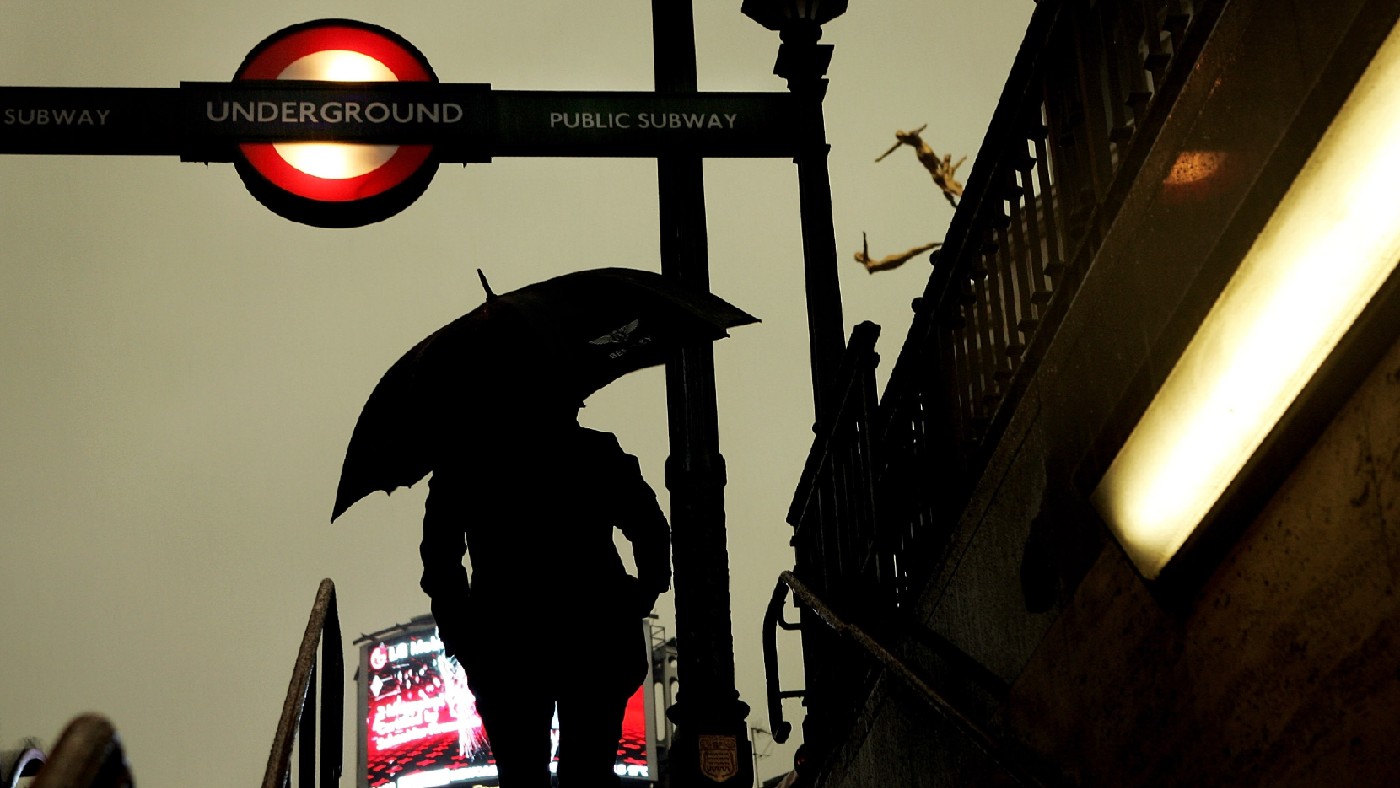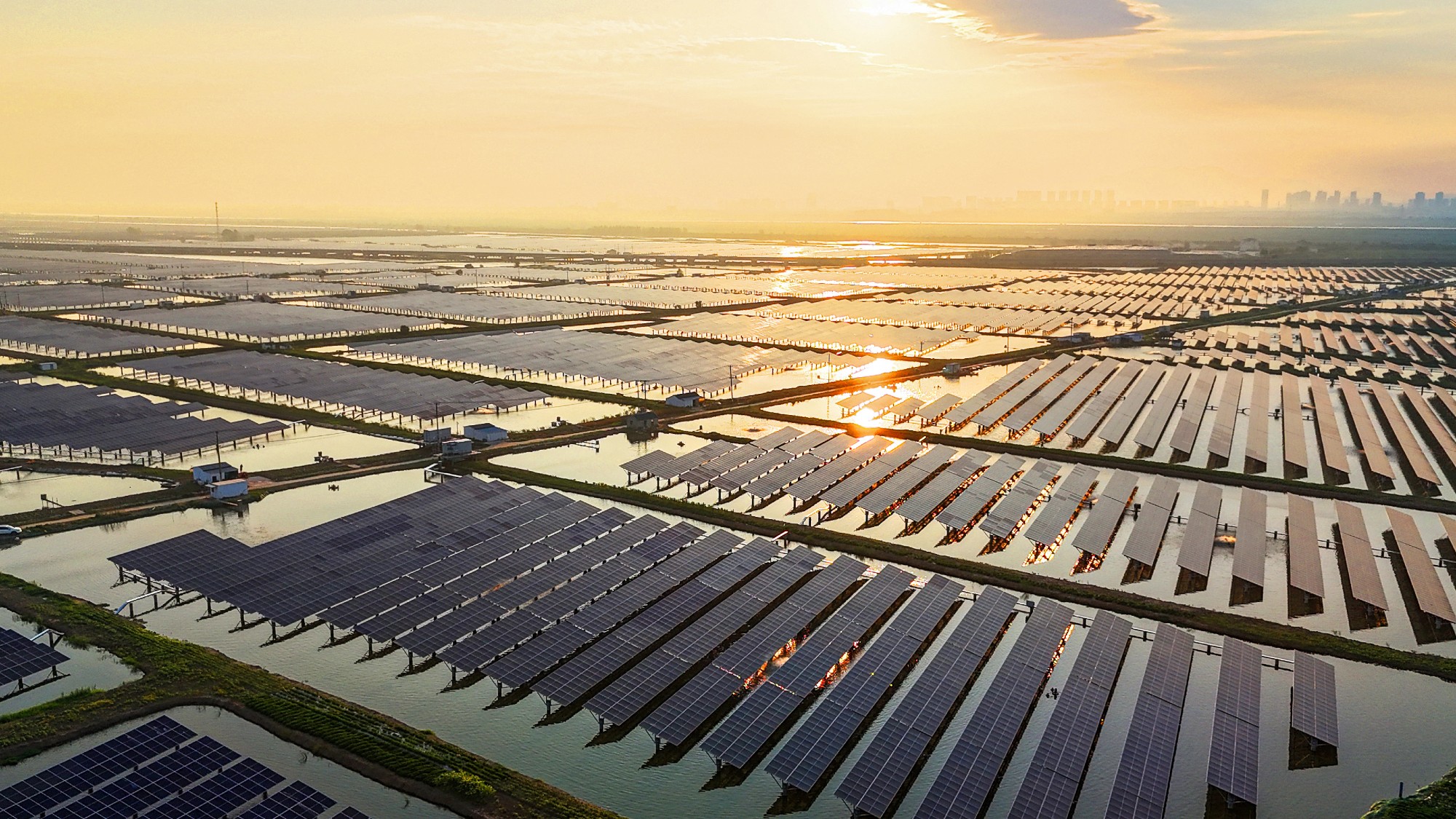Will London’s Tube stations face more floods?
An unpublished London Underground report identified 85 Tube stations as being at ‘high risk’ of flooding

Flash flooding swept parts of London on Sunday afternoon, leading to the closure of many major roads, the abandoning of vehicles and the submerging of several Tube stations.
The London Fire Brigade took more than 1,000 flooding-related calls and had to rescue people trapped in cars, as well as those with flooded basements and collapsed ceilings, says the BBC. Met Police officers were drafted in to support the firefighters.
Several London Underground stations, including Covent Garden, Edgware Road, Kennington and Stockwell, were forced to close, as well as east London’s Pudding Mill Lane DLR station, which was entirely submerged by rainwater. Videos shared on social media showed what the London Evening Standard described as “torrents of water” gushing into the station, creating “a whirlpool” at the ticket barriers.
The Week
Escape your echo chamber. Get the facts behind the news, plus analysis from multiple perspectives.

Sign up for The Week's Free Newsletters
From our morning news briefing to a weekly Good News Newsletter, get the best of The Week delivered directly to your inbox.
From our morning news briefing to a weekly Good News Newsletter, get the best of The Week delivered directly to your inbox.
By Monday morning, just one station – Stepney Green in east London – remained closed due to flooding, with other stations closed due to staff shortages. Although the weather was warmer and drier on Monday than Sunday, more torrential rain is expected in the capital during the rest of the week.
But as shocking as yesterday’s London Underground flooding was, the Tube system’s vulnerability to flash flooding should not have come as a surprise to Transport for London.
Back in 2016, The Independent accessed an unpublished London Underground flood risk report which was funded after Hurricane Sandy submerged parts of the New York metro system in 2012. The report identified 85 Tube stations as being at “high risk” of flooding, including the particularly busy terminals of King’s Cross, London Bridge and Waterloo.
Across the city, Finsbury Park, Notting Hill Gate, Seven Sisters, Colliers Wood, Stockwell and Marble Arch were all in the top ten highest-risk stations.
A free daily email with the biggest news stories of the day – and the best features from TheWeek.com
The report found that both climate change and the “increased laying of asphalt over earth surfaces”, which puts more pressure on sewers, would contribute to increase flooding in London and subsequently the city’s underground system in the future. “London has been fortunate to escape the worst of recent storm events in the UK, but it is only a matter of time before heavy rainfall seriously affects London and the underground network,” it added.
The Guardian, which also obtained a copy of the unpublished report, reported that the London Underground had requested £3m over the next three years “to analyse the riskiest sites in greater detail and to begin to install protective measures”. But the Tube’s head drainage engineer told the paper that the amount would not “scratch the surface” of the problem. Over the past few years, Transport for London, which oversees London Underground’s budget, has seen its funding repeatedly slashed.
In 2019, a report by Caroline Russell, a Green Party representative of the London Assembly, found that flooding had forced the closure of Tube stations for more than 137 hours since 2014. The Climate Change Risks for London report found that, on average, a station closed for more than two hours when shut by flooding and that 41 different stations had reported closures due to floods since 2015.
Fifteen months later, in January 2021, Russell warned London Mayor Sadiq Khan that he needed to accelerate the construction of Sustainable Drainage Systems (SuDS) or London could face a future of flooded Tube stations. SuDS avoid letting excess rain run off into conventional drains and sewers, which cannot deal with “the extreme weather expected in the coming years”, Russell said.
“The Mayor needs to show leadership and speed up the delivery of new SuDS schemes all over London to stop flooding closing our tube stations, blocking streets and putting the homes and businesses of Londoners at risk,” she added in a statement.
In December last year, the mayor said “London and other urban areas find it harder to attract government funding for surface water flood protection” as the many small schemes needed to manage the problem “rarely meet the funding criteria”.
He said City Hall was working with the Environment Agency and other key stakeholders to manage flood risk and unlock further funding.
Sunday’s flooding came just two weeks after flash flooding hit parts of London, with some neighbourhoods receiving a month’s worth of rain in a single day.
“The pictures of flooded stations and roads show the work that needs to be done to give people – not just in London but around the UK – the protection they need to try and help mitigate such events as and when they arise”, writes Chris Stevenson in The Independent.
Kate Samuelson is The Week's former newsletter editor. She was also a regular guest on award-winning podcast The Week Unwrapped. Kate's career as a journalist began on the MailOnline graduate training scheme, which involved stints as a reporter at the South West News Service's office in Cambridge and the Liverpool Echo. She moved from MailOnline to Time magazine's satellite office in London, where she covered current affairs and culture for both the print mag and website. Before joining The Week, Kate worked at ActionAid UK, where she led the planning and delivery of all content gathering trips, from Bangladesh to Brazil. She is passionate about women's rights and using her skills as a journalist to highlight underrepresented communities. Alongside her staff roles, Kate has written for various magazines and newspapers including Stylist, Metro.co.uk, The Guardian and the i news site. She is also the founder and editor of Cheapskate London, an award-winning weekly newsletter that curates the best free events with the aim of making the capital more accessible.
-
 Political cartoons for December 13
Political cartoons for December 13Cartoons Saturday's political cartoons include saving healthcare, the affordability crisis, and more
-
 Farage’s £9m windfall: will it smooth his path to power?
Farage’s £9m windfall: will it smooth his path to power?In Depth The record donation has come amidst rumours of collaboration with the Conservatives and allegations of racism in Farage's school days
-
 The issue dividing Israel: ultra-Orthodox draft dodgers
The issue dividing Israel: ultra-Orthodox draft dodgersIn the Spotlight A new bill has solidified the community’s ‘draft evasion’ stance, with this issue becoming the country’s ‘greatest internal security threat’
-
 Death toll from Southeast Asia storms tops 1,000
Death toll from Southeast Asia storms tops 1,000speed read Catastrophic floods and landslides have struck Sri Lanka, Indonesia, Thailand and Malaysia
-
 Can for-profit geoengineering put a pause on climate change?
Can for-profit geoengineering put a pause on climate change?In the Spotlight Stardust Solutions wants to dim the sun. Scientists are worried.
-
 How will climate change affect the UK?
How will climate change affect the UK?The Explainer Met Office projections show the UK getting substantially warmer and wetter – with more extreme weather events
-
 Can the UK do more on climate change?
Can the UK do more on climate change?Today's Big Question Labour has shown leadership in the face of fraying international consensus, but must show the public their green mission is ‘a net benefit, not a net cost’
-
 Did Cop30 fulfil its promise to Indigenous Brazilians?
Did Cop30 fulfil its promise to Indigenous Brazilians?Today’s Big Question Brazilian president approves 10 new protected territories, following ‘unprecedented’ Indigenous presence at conference, both as delegates and protesters
-
 Can the world adapt to climate change?
Can the world adapt to climate change?Today's Big Question As the world gets hotter, COP30 leaders consider resilience efforts
-
 Taps could run dry in drought-stricken Tehran
Taps could run dry in drought-stricken TehranUnder the Radar President warns that unless rationing eases water crisis, citizens may have to evacuate the capital
-
 The future of the Paris Agreement
The future of the Paris AgreementThe Explainer UN secretary general warns it is ‘inevitable’ the world will overshoot 1.5C target, but there is still time to change course